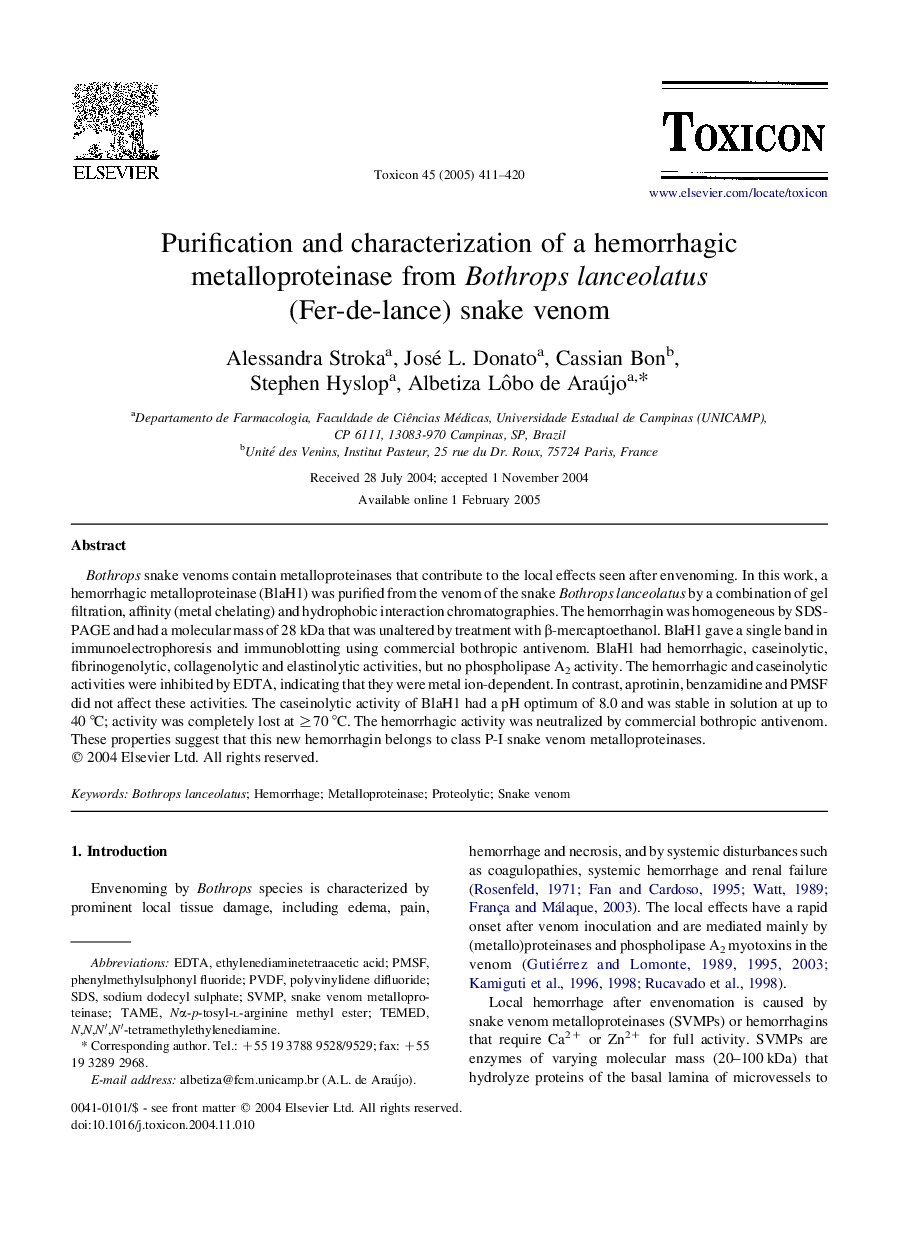| Article ID | Journal | Published Year | Pages | File Type |
|---|---|---|---|---|
| 10880270 | Toxicon | 2005 | 10 Pages |
Abstract
Bothrops snake venoms contain metalloproteinases that contribute to the local effects seen after envenoming. In this work, a hemorrhagic metalloproteinase (BlaH1) was purified from the venom of the snake Bothrops lanceolatus by a combination of gel filtration, affinity (metal chelating) and hydrophobic interaction chromatographies. The hemorrhagin was homogeneous by SDS-PAGE and had a molecular mass of 28 kDa that was unaltered by treatment with β-mercaptoethanol. BlaH1 gave a single band in immunoelectrophoresis and immunoblotting using commercial bothropic antivenom. BlaH1 had hemorrhagic, caseinolytic, fibrinogenolytic, collagenolytic and elastinolytic activities, but no phospholipase A2 activity. The hemorrhagic and caseinolytic activities were inhibited by EDTA, indicating that they were metal ion-dependent. In contrast, aprotinin, benzamidine and PMSF did not affect these activities. The caseinolytic activity of BlaH1 had a pH optimum of 8.0 and was stable in solution at up to 40 °C; activity was completely lost at â¥70 °C. The hemorrhagic activity was neutralized by commercial bothropic antivenom. These properties suggest that this new hemorrhagin belongs to class P-I snake venom metalloproteinases.
Keywords
Related Topics
Life Sciences
Biochemistry, Genetics and Molecular Biology
Biochemistry, Genetics and Molecular Biology (General)
Authors
Alessandra Stroka, José L. Donato, Cassian Bon, Stephen Hyslop, Albetiza Lôbo de Araújo,
